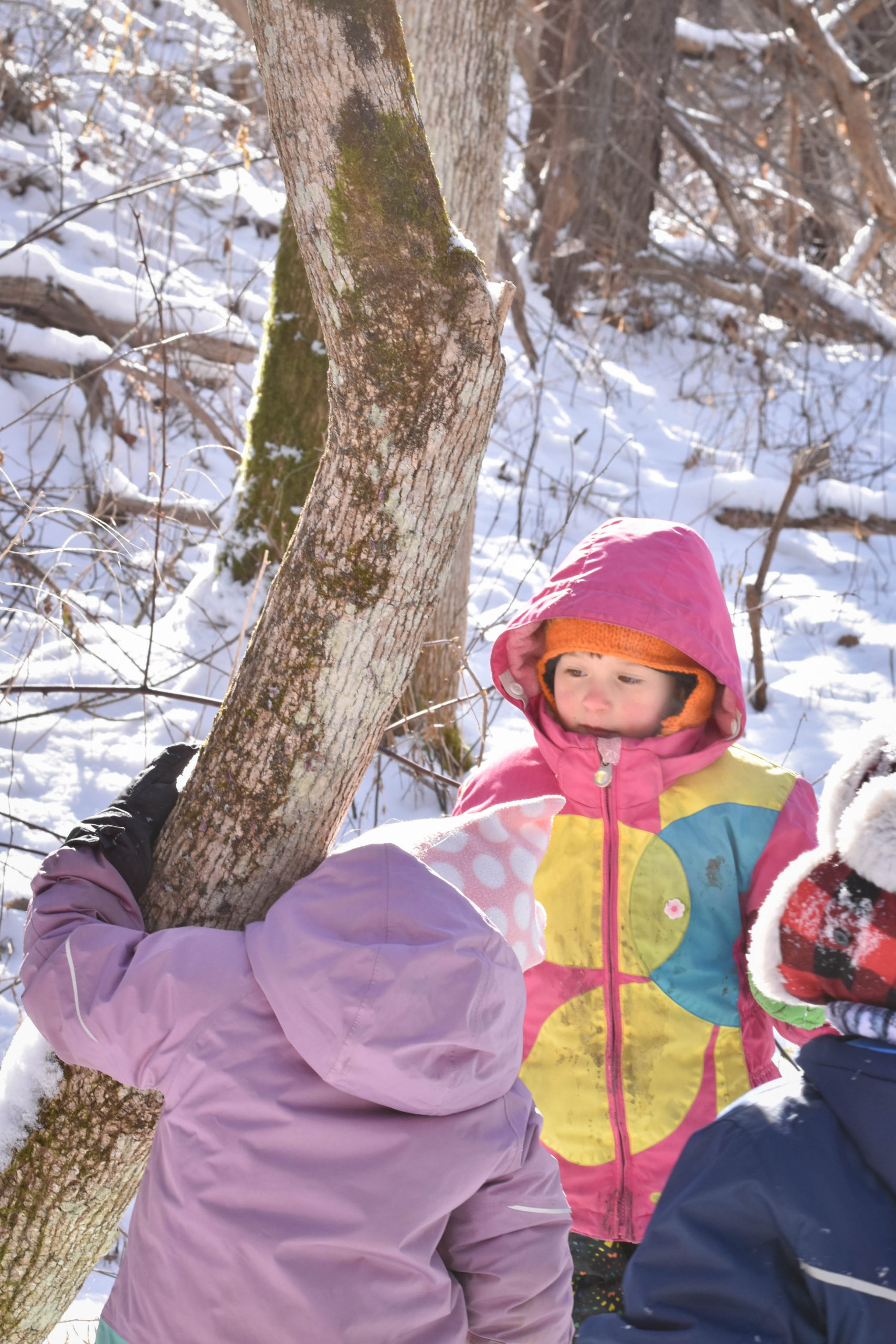
Why Winter
We spent a cold, windy day out there today, with an inch of fresh powder coating the trees and covering up yesterday’s mud and slush. Aside from a few requests to “help me put my mittens back on—my hands are cold”, there were no complaints about the cold. There were: lots of cheerful stomping in cold puddles, curious following of squirrel tracks, triumphant climbing up snowy logs, and patient waiting for a grown-up to scoop water from the raging creek for the purpose of making “potions”.
There were also children keeping track of their mittens, packing up their own lunchboxes, and taking themselves to the Peace Log when they needed space. Even though we offer plenty of support in winter, eventually they learn that if they don’t want to wait for a grown-up to help they better do it themselves. The self-sufficiency learning curve is steep in winter.
Take mittens. At first, children may refuse to wear them because they get in the way. They take them off every chance they get. But the environment gives them direct feedback and an introduction to cause and effect: I touch snow with my bare hands; my hands get cold. They learn to take their mittens off only when necessary and to know where they are at all times so they can quickly be put back on. This all involves high-level cognitive processes such as “executive functioning”. What a great learning tool mittens are!
Why is winter a great time to be a forest preschooler?
Spending time in the cold is good for your physical health. Learning to take care of yourself in the cold is good for your cognitive and social-emotional development. And learning to be comfortable in winter and appreciate its beauty sets you up for a lifetime of enjoyment and benefits.





Recent Comments